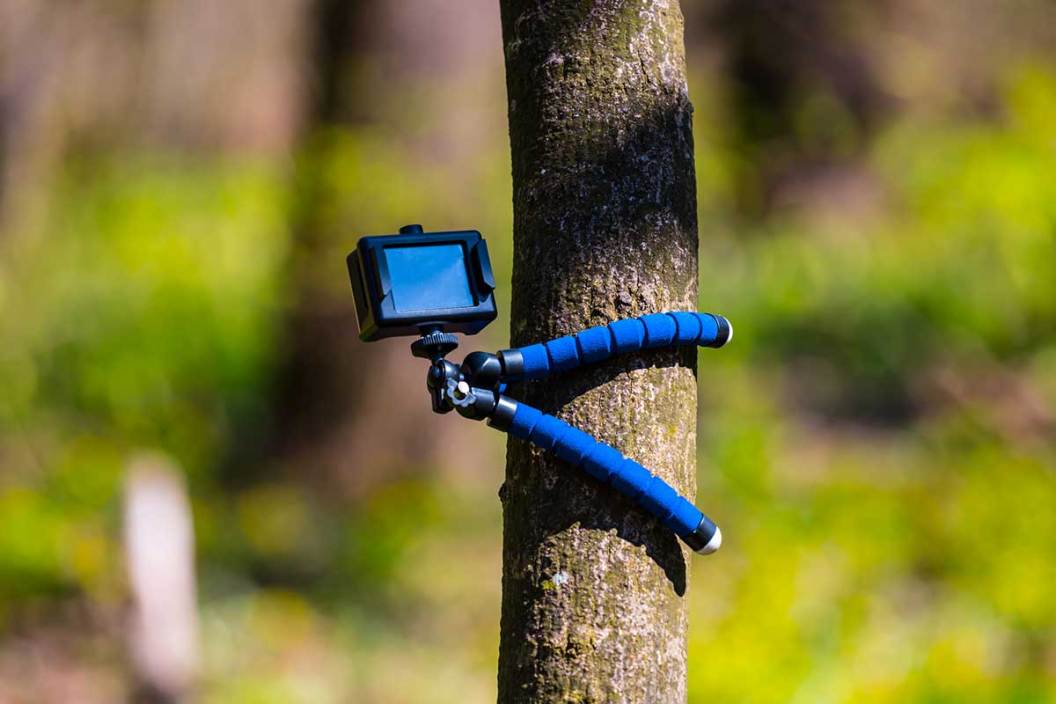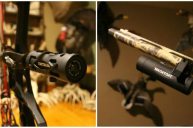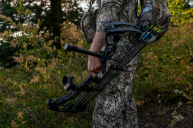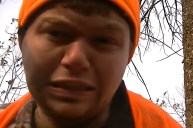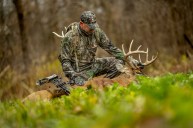Recording your hunts is worth a lot more than a quick kill shot video.
Video recording your hunts is not for everyone. I am convinced that getting a deer in frame, pulling a bow back, and landing a perfect shot is one of the hardest things to do in the outdoors.
If you can pull it off, it adds a whole new level of complexity to the hunt, but carrying all the gear and learning how to get the perfect angle while in the stand is a tough skill to master.
For those wondering if filming a hunt is worth it, let's take a look at a few things that the footage can tell you. We'll focus on whitetail deer hunting, but many of these points can transfer to any game animal.
An Invaluable Post-Shot Tracking Tool
One of the first things a hunting video can tell you is where you hit the animal. This is incredibly helpful for tracking, and especially for deer hunters. It can be tough to see or remember exactly where you hit the deer in the heat of the moment. Most hunters presume they made a perfect shot, only to find out that it was far from perfect after finally tracking down the animal.
A video can also help take a lot of the guesswork out of tracking. If you know exactly where a deer was hit, you will know about how long it will take for it to expire and it should influence how you track them. This is particularly helpful for a bowhunter when they can't find their arrow after the shot.
What Was the Deer's First Reaction?
Another thing to look at is the deer's first reaction to the shot. Do they stand there like a stone wall, or do they jump the string? This will tell you if deer are extra skittish in that area, or if you just have a loud bow. Jumping the string happens a lot at range, but it can also happen at 20 yards. Film helps to tell if they actually jumped the string, or if you just missed.
You can also look at other deer in the frame to see how they react. If every deer in the frame was skittish then you know that you need to change something up. Although if they do not all immediately spook, then you know that you are well concealed and they had no idea you were there.
Did You Shoot Like You Practiced?
When I record my hunts, I focus a camcorder on the deer, but I also have a GoPro camera. I like to put it on my bow hanger, and before I grab my bow, I hit record. This captures my point of view and creates a nice dynamic for the video overall.
However, I also use it to see if I did everything like I practiced at home. You often hear people say you "Play how you practice" in relation to sports, but it's just as important in hunting. Proper form is incredibly important when shooting your bow, and if you missed your shot, your recorded film may be able to show you why. Then you will know exactly what you need to work on in the backyard.
Where Did the Deer Come From?
Recordings do a much better job of describing an experience than words ever could. I often describe my hunting experiences like this: "A buck came from this treeline over here." That is helpful, but a recording can show whether he came down a trail or not, and can even depict its reaction and movement as it emerges.
I like to film every deer I see in the woods, not only for fun but for intel. After a whole season it can be tough to remember where every single deer was, but with the film you have proof. I usually write it down later after making sense of things, and then I can put together a systematic hypothesis as to how deer are moving in the area.
You might be surprised to find out that a lot more deer than you thought are coming from a certain direction or at a certain time of day. If the data says one thing but your memory says another, you should go with the data and adjust your stand location or sitting time accordingly.
Weather Activity and Record Keeping
This one relates to the last tip, but it's worth emphasizing: the time stamps on hunting videos are crucial. If you are filming everything, or are at least filming most of the bucks, then you can create a data point every time you see one. With the use of the film, you can record where bucks come from as well as the weather and wind conditions.
Quite frankly, weather is the number one factor that influences deer movement. If you collect a lot of this movement data and combine it with the weather info (using the date and time stamps on the video), then you can quickly find some correlations as to when deer move on your property relative to different weather patterns.
You can even go as far as gathering moon phase data based on the date. The more data the better in my opinion, and weather data is the best thing you can gather related to whitetail movement.
Plus, you can use the timestamps from trail camera pictures as well. You will not get as much data from a photograph, but every little bit helps.
Deer behave differently all over the country, so you may find out that deer in your area move a lot more in low barometric pressure rather than high barometric pressure, or vice versa. Maybe they move more in the rain, or during a full moon, but the only way to know is to gather the data. A video recording will help you out big time.
Keeping Records of Young Bucks
Lastly, you can use your film to keep track of young male deer. If you are interested in quality deer management, then you definitely want to keep up with your bucks.
A trail cam can help this process, but it can be more difficult to reliably say a deer is who you think it is from a single picture. Film typically lets you see a lot more angles. Plus, you will be there holding the camcorder to see him for yourself, cementing the presence of that particular deer in your brain even further.
All and all, filming hunts is a lot of fun and there is a lot that it can tell you about your deer population. It can be an invaluable tool for tracking, and can tell you if you even hit the deer. Other than that, it can help you figure out what piece of your bow shooting form is falling a little short. And of course, you can also use the film to gather data about the game animals in the area, and after analyzing that data, you will be able to hunt them more effectively.
Filming your hunts is a lot of work, but it is fun and rewarding. We suggest you try it out next season if you have never done it before.
NEXT: MILESTONES AND BENCHMARKS FOR SEASONED WHITETAIL HUNTERS
